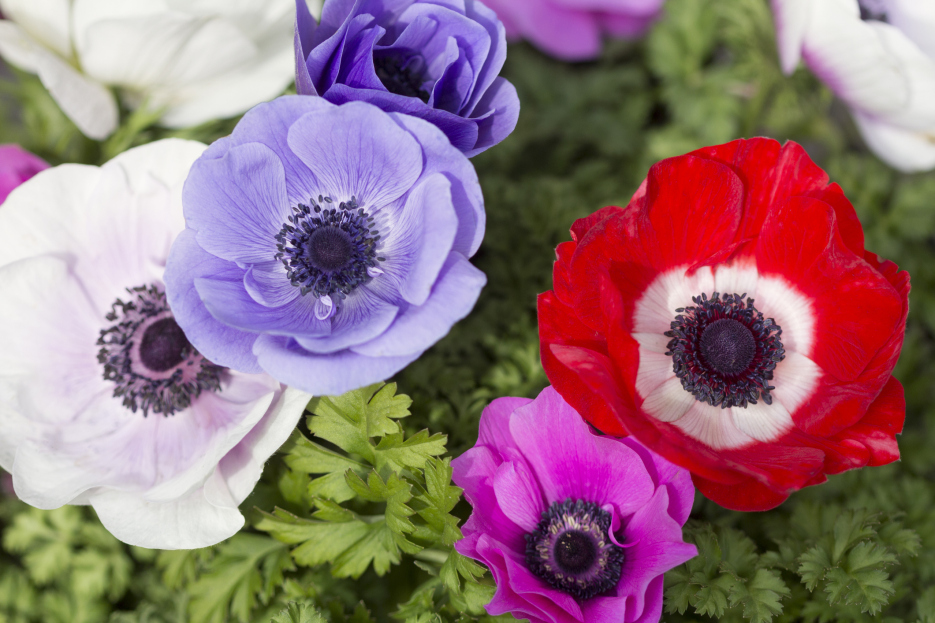
Anemone, known for its vibrant and delicate flowers, is a beautiful plant that can be grown both outdoors and indoors. While it’s more commonly found in gardens, with the right care, Anemone can thrive as a houseplant, bringing a splash of color and a touch of elegance to your indoor space. Here’s a comprehensive guide to help you care for your Anemone houseplant.
Anemones thrive in bright, indirect light. Ideally, place your Anemone in a location where it can receive plenty of light but is protected from the harsh direct sun, which can scorch the delicate flowers and leaves. A spot near an east or west-facing window is often the best, as it will provide the plant with a good amount of natural light throughout the day.
If you're growing Anemone in a room with less light, you can supplement with grow lights to ensure the plant gets the right amount of light it needs for healthy growth and blooming.
Anemones prefer evenly moist soil but are sensitive to both underwatering and overwatering. The key is to keep the soil slightly damp but never soggy. Water the plant when the top inch of soil feels dry to the touch, ensuring that the water drains well from the bottom of the pot.
Be sure not to let your plant sit in standing water, as this can lead to root rot. During the growing season, which typically occurs in the spring and summer, you may need to water more frequently, especially if the plant is in a warm, dry environment. During the fall and winter months, when Anemones go dormant, reduce watering to allow the plant to rest.
Anemones prefer well-draining, fertile soil. A standard houseplant potting mix combined with perlite or sand will work well to ensure proper drainage. Anemones do not like to sit in waterlogged soil, so make sure your pot has drainage holes to allow excess water to escape.
If you are repotting your Anemone, choose a slightly larger pot with good drainage to avoid root rot. You can repot the plant every couple of years, especially if you notice it outgrowing its current container.
Anemones grow best in moderate temperatures, ideally between 60°F and 70°F (15°C to 21°C). They are sensitive to extreme heat and cold, so it’s important to avoid placing them near drafts, air conditioners, or heaters. A stable room temperature is ideal for the plant’s growth and blooming cycle.
Anemones also prefer moderate humidity levels, but they can tolerate average indoor humidity. If the air in your home is particularly dry, especially during winter, you can increase humidity around the plant by misting it lightly or placing a humidity tray near it. However, avoid getting water on the flowers, as this can cause them to wilt prematurely.
Anemones are not heavy feeders, but they can benefit from occasional fertilization during the growing season. Use a balanced, water-soluble fertilizer, diluted to half strength. Fertilize your plant every 4-6 weeks from spring to late summer to encourage healthy growth and abundant blooms.
During the fall and winter months, when the plant is dormant, you can stop fertilizing. Over-fertilizing during the dormant period can stress the plant and lead to poor growth.
To keep your Anemone plant looking its best, regularly remove dead or faded flowers by cutting the flower stalks at the base. This process, known as deadheading, helps prevent the plant from putting energy into seed production and encourages new blooms.
You can also trim back any yellowing or damaged leaves to maintain the plant’s appearance. However, avoid cutting back too much of the foliage, as the leaves are essential for photosynthesis and the plant’s overall health.
Anemones are generally resistant to pests, but they can occasionally attract aphids, spider mites, or whiteflies. If you notice small pests on the leaves or a sticky residue, check the plant closely. You can treat pests by spraying the plant with insecticidal soap or neem oil, or by wiping the leaves gently with a damp cloth.
Anemones can also be prone to fungal diseases, especially if they are overwatered or if the leaves stay damp for too long. To prevent fungal infections, ensure the plant has good air circulation and avoid overhead watering. If you notice any signs of mold or mildew, remove the affected leaves and treat the plant with a fungicide.
In colder months, Anemones enter a dormant phase, and it’s important to adjust their care accordingly. Reduce watering and stop fertilizing during this period. If your Anemone is grown outdoors, you may need to bring it inside for the winter to protect it from the cold. If the plant goes dormant indoors, it will likely not require much attention until it begins to show signs of new growth in the spring.
Anemones are generally considered non-toxic to pets, making them a safer choice for homes with cats and dogs. However, it's always a good idea to keep any plant out of reach of curious pets to prevent accidental ingestion, as even non-toxic plants can cause digestive upset if eaten in large quantities.